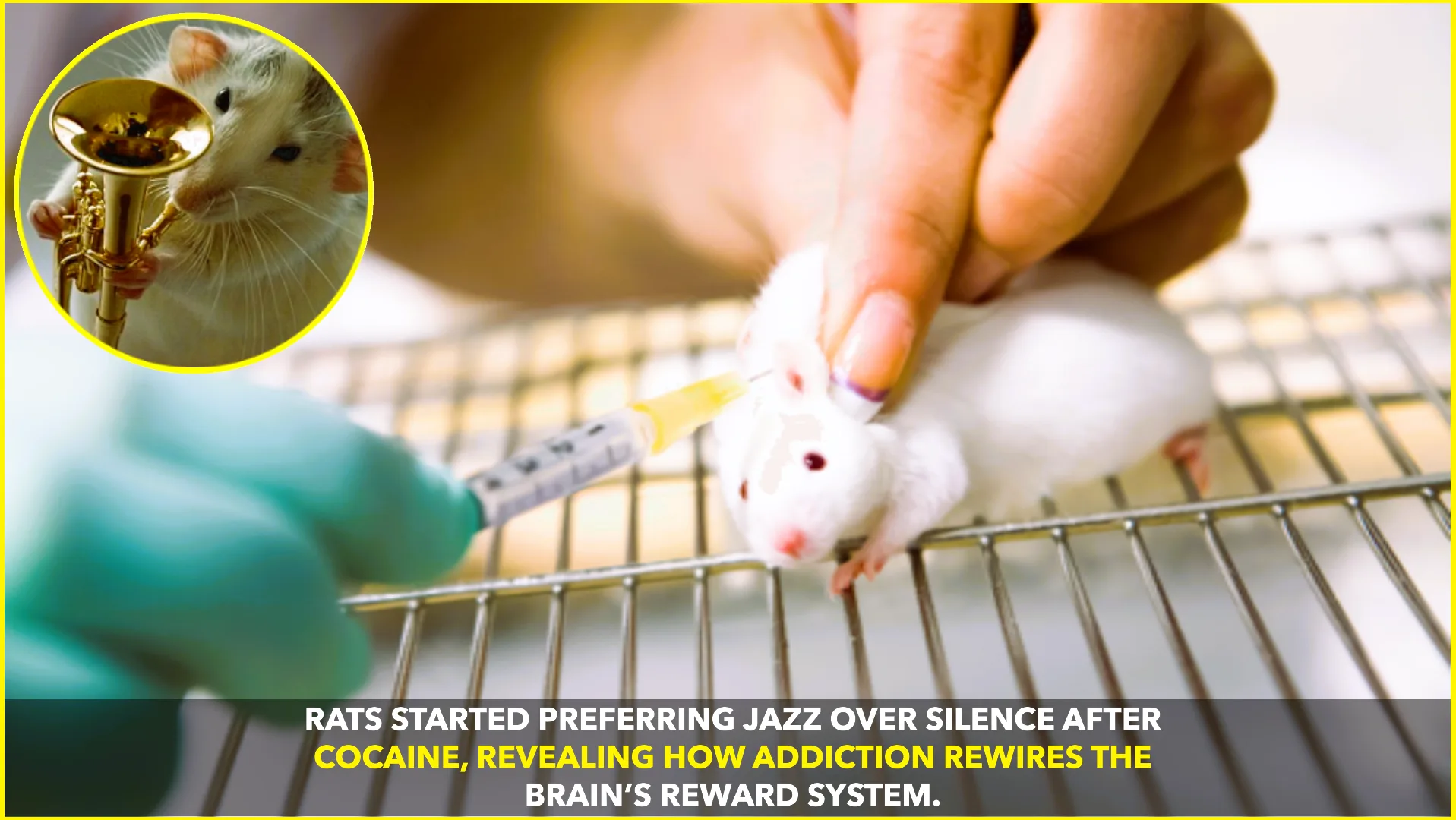In a bizarre yet fascinating discovery, researchers at Albany Medical College have found that rats under the influence of cocaine began favoring jazz music over silence—an unexpected behavioral twist that’s sparking fresh debate about how drugs alter the brain’s reward and sensory systems.
From Quiet to Miles Davis
Before any drug exposure, the rats showed a clear preference for silence over any form of music—be it Beethoven’s classical compositions or the soulful tunes of Miles Davis. According to the research team, this aligns with natural animal instincts, as most rodents prefer calm, low-stimulation environments.
However, the scenario changed dramatically once the subjects were administered cocaine. Within days, the same rats began spending more time near speakers playing jazz tracks. The shift, the researchers say, wasn’t random—it mirrored how cocaine influences dopamine, the brain’s “feel-good” neurotransmitter that governs pleasure and reward.
A Window Into Addiction
Lead neuroscientists behind the study explained that cocaine’s effect on dopamine release might make complex, rhythmic sounds like jazz more rewarding to the brain. In humans, similar mechanisms could explain why drug use often changes sensory preferences or emotional responses.
“This kind of research helps us understand how addiction rewires the brain’s pleasure circuits,” said a spokesperson for Albany Med’s neuroscience department. “It’s not about rats liking jazz—it’s about understanding the deeper neurological shifts that occur with substance use.”
The study, involving 50 rats over an eight-week period, may be limited in scale but opens new pathways for exploring how drugs affect perception and behavior—not just in animals, but also in humans struggling with addiction.
Ethical Debate Sparks Outrage
Not everyone is applauding the experiment. Animal rights advocates have condemned the study, calling it both unethical and unnecessary. People for Ethical Treatment of Animals (PETA) criticized the idea of giving rats cocaine for what they termed “trivial behavioral data.”
“Subjecting animals to addictive substances for curiosity-driven research is cruel and outdated,” said a PETA spokesperson. “We already know cocaine alters the brain—there’s no justification for exposing animals to harm to learn that rats can swing to jazz.”
Albany Medical College, however, defended its methods, insisting the research followed strict ethical standards approved by animal welfare committees. The institution emphasized that understanding the neurological effects of addiction could lead to breakthroughs in human addiction therapy.
Science vs. Ethics
The controversy touches on a deeper question that often haunts scientific research: How far should scientists go in the name of discovery?
Proponents argue that animal testing remains a crucial step in studying the human brain and developing effective treatments for addiction. Critics, on the other hand, believe that modern computer models and human-based data analysis should replace live-animal experimentation whenever possible.
Despite the backlash, the findings have intrigued neuroscientists worldwide. The notion that a change in music preference—something seemingly unrelated to drug use—can reveal clues about addiction’s grip on the brain shows how complex and far-reaching the effects of narcotics can be.
A Beat of Curiosity
The study’s results have already inspired follow-up discussions among behavioral scientists. Some suggest that similar experiments could explore whether other substances, like nicotine or alcohol, might influence musical or sensory preferences in comparable ways.
While the idea of “rats vibing to jazz” might sound whimsical, the implications are serious. If drug-induced changes in sensory enjoyment can be mapped and measured, it could pave the way for new behavioral therapies targeting addiction recovery.
Looking Forward
Though limited in sample size, the research from Albany Medical College sheds light on how deeply addiction can rewire the brain’s reward systems. Whether in rats or humans, the lure of pleasure—be it from drugs or music—seems to share the same neurological rhythm.
As the debate continues, one thing is certain: the line between curiosity and compassion in science remains as delicate as a jazz improvisation.
Source: Albany Medical College, Behavioral Neuroscience Research Report (2025)










